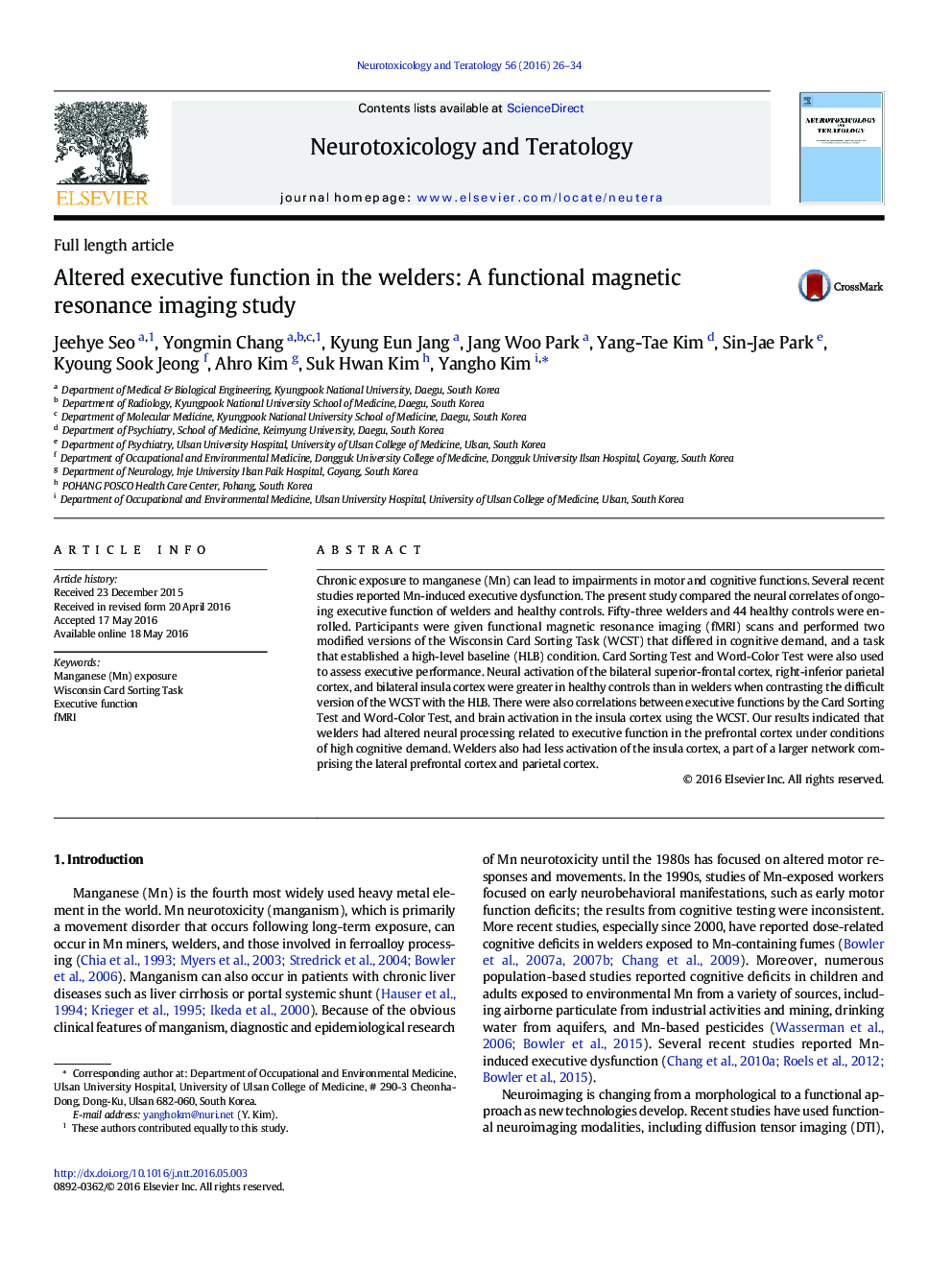| کد مقاله | کد نشریه | سال انتشار | مقاله انگلیسی | نسخه تمام متن |
|---|---|---|---|---|
| 2590802 | 1562080 | 2016 | 9 صفحه PDF | دانلود رایگان |
• We compared the neural correlates of ongoing executive function of 53 welders and 44 healthy controls.
• Participants were given functional magnetic resonance imaging scans and performed the Wisconsin Card Sorting Task.
• Welders had altered neural processing related to executive function in the prefrontal, parietal, and insular cortex.
Chronic exposure to manganese (Mn) can lead to impairments in motor and cognitive functions. Several recent studies reported Mn-induced executive dysfunction. The present study compared the neural correlates of ongoing executive function of welders and healthy controls. Fifty-three welders and 44 healthy controls were enrolled. Participants were given functional magnetic resonance imaging (fMRI) scans and performed two modified versions of the Wisconsin Card Sorting Task (WCST) that differed in cognitive demand, and a task that established a high-level baseline (HLB) condition. Card Sorting Test and Word-Color Test were also used to assess executive performance. Neural activation of the bilateral superior-frontal cortex, right-inferior parietal cortex, and bilateral insula cortex were greater in healthy controls than in welders when contrasting the difficult version of the WCST with the HLB. There were also correlations between executive functions by the Card Sorting Test and Word-Color Test, and brain activation in the insula cortex using the WCST. Our results indicated that welders had altered neural processing related to executive function in the prefrontal cortex under conditions of high cognitive demand. Welders also had less activation of the insula cortex, a part of a larger network comprising the lateral prefrontal cortex and parietal cortex.
Group differences illustrated in brain activation evoked by the contrast the Wisconsin Card Sorting Task A vs. high-level baseline (HLB) condition (a), and by the contrast the Wisconsin Card Sorting Task A vs. Wisconsin Card Sorting Task B condition (b).Figure optionsDownload as PowerPoint slide
Journal: Neurotoxicology and Teratology - Volume 56, July–August 2016, Pages 26–34
